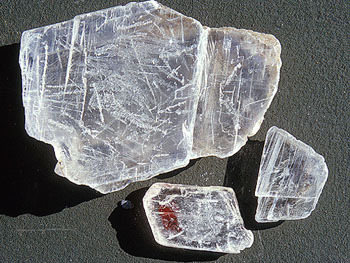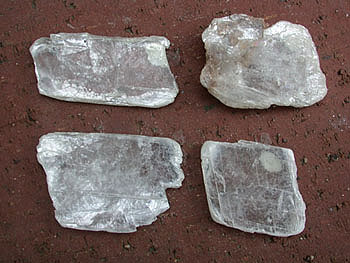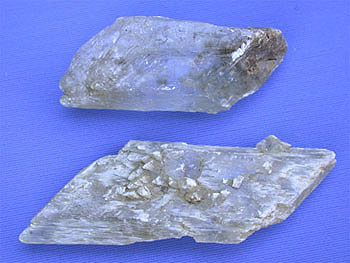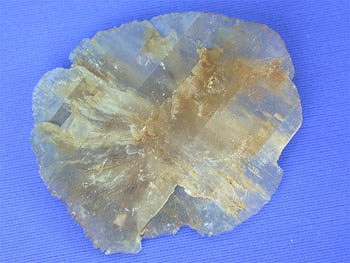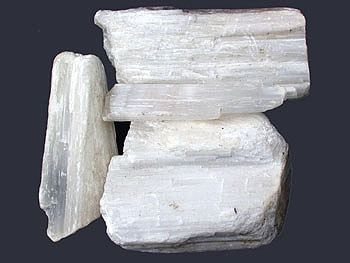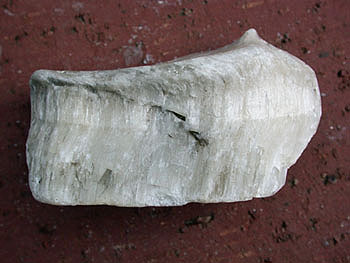
|
| Gypsum is readily identified by its softness (a fingernail scratches it). Gypsum comes as clear crystals that display one perfect cleavage (selenite), as blocks of featureless white rock (alabaster), and as silky fibrous blocks (satin spar).
Halite (next page) breaks into cubes (three cleavages at right angles) and tastes like table salt. Go to Halite page |
Go to Halite page
Go back to Common Minerals page
Return to Home
|
|
|
